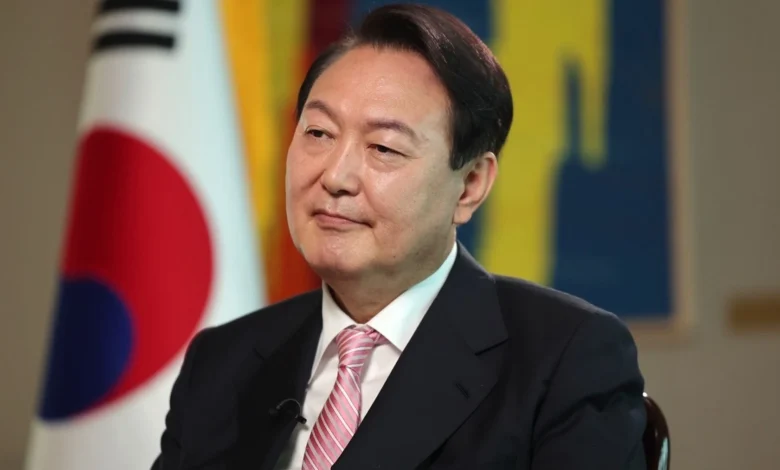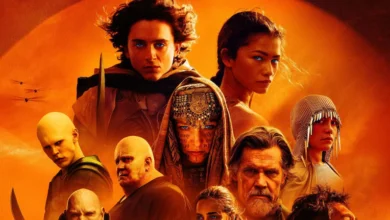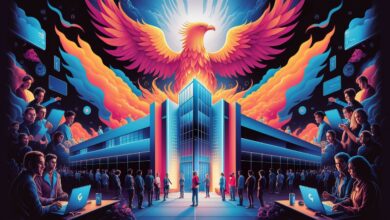The Turbulent Reign: Understanding South Korea’s Presidency Through History and Crisis

Introduction: The World’s Most Dangerous Job?
South Korea’s presidency stands as one of Asia’s most powerful executive offices, yet its history reads like a chronicle of tragedy and turmoil. Since the office’s establishment in 1948, no democratically elected president has completed their term scandal-free or avoided post-presidential investigations. The position combines immense constitutional authority with crushing cultural expectations, operating within a hyper-competitive democracy where regional loyalties, generational divides, and Cold War legacies collide. Recent events—from the 2017 impeachment of Park Geun-hye to the 2025 ouster of Yoon Suk Yeol over an abortive martial law declaration—reveal an institution perpetually in crisis. This article examines why South Korea’s highest office remains trapped in a cycle of expectation and downfall, analyzing its powers, historical evolution, and the human dramas that define it 111.
1. Constitutional Foundation: Imperial Powers, Democratic Constraints
The 1987 Constitution created a dual-edged framework: granting sweeping executive powers while embedding mechanisms for accountability. The president serves as head of state, chief executive, and commander-in-chief with authority to declare war, issue executive orders, and appoint senior officials without legislative confirmation. Critically, they wield veto power over the National Assembly (though overridable by two-thirds majority) and may declare martial law during emergencies. Yet counterbalancing this are draconian limitations:
- A strict five-year single term with no re-election, forcing lame-duck status within months of inauguration
- Criminal liability exceptions only for insurrection or treason, enabling post-term prosecutions
- An impeachment process requiring simple majority Assembly vote followed by Constitutional Court review
This structure creates what scholars call the “imperial presidency” paradox: leaders operate with vast authority yet lack time to implement agendas, often resorting to rash actions as deadlines loom. The 2024–25 crisis exemplified this, when President Yoon Suk Yeol—facing legislative obstruction—declared martial law to target “pro-North Korean elements,” only to be impeached and removed within months 148.
2. Historical Evolution: From Strongmen to Democratic Sacrifices
First Republic (1948–1960): The Rhee Dynasty
Syngman Rhee, the U.S.-backed independence activist, became South Korea’s founding president but rapidly descended into authoritarian rule. After manipulating the 1960 elections, student protests dubbed the “April Revolution” forced his exile to Hawaii, where he died in 1965. His legacy established a recurring pattern: initial hope, followed by power consolidation, and terminal disgrace 211.
Military Rule (1961–1987): Developmental Dictators
General Park Chung-hee seized power via a 1961 coup, launching 18 years of military-dominated rule. While orchestrating the “Miracle on the Han River” that industrialized South Korea, Park imposed martial law in 1972, declaring himself president for life. His 1979 assassination by his intelligence chief epitomized the regime’s internal rot. Successor Chun Doo-hwan escalated repression, most infamously ordering the Gwangju Massacre (1980) where troops killed hundreds of pro-democracy protesters. Both generals were later convicted for treason and corruption 211.
Democratic Era (1987–Present): The Rise and Fall Cycle
The 1987 Constitution established direct presidential elections but failed to break the scandal cycle:
- Roh Tae-woo (1988–93): Chun’s handpicked successor, jailed for bribery and coup involvement
- Kim Young-sam (1993–98): Oversaw chaebol reforms but presidency collapsed in 1997 Asian Financial Crisis
- Kim Dae-jung (1998–2003): Won Nobel Peace Prize for Sunshine Policy but aides convicted of taking North Korean bribes
- Roh Moo-hyun (2003–08): Committed suicide amid corruption investigations
- Lee Myung-bak (2008–13): Jailed for bribery after leaving office
- Park Geun-hye (2013–17): Impeached for letting confidante Choi Soon-sil extort conglomerates 2911.
Table: South Korea’s Presidential Scandals Since 1987
| President | Term | Post-Term Fate |
| Roh Tae-woo | 1988–1993 | 17-year prison sentence (pardoned) |
| Kim Young-sam | 1993–1998 | Son jailed for bribery |
| Kim Dae-jung | 1998–2003 | Sons jailed for bribery |
| Roh Moo-hyun | 2003–2008 | Suicide during bribery probe |
| Lee Myung-bak | 2008–2013 | 17-year prison sentence (pardoned) |
| Park Geun-hye | 2013–2017 | 20-year prison sentence (pardoned) |
| Yoon Suk Yeol | 2022–2025 | Impeached/removed for insurrection |
3. Structural Challenges: Why Presidents Fail
A. The Imperial Presidency vs. Constrained Reality
South Korean presidents enter office with promises of transformational leadership, yet face systemic constraints:
- The single five-year term incentivizes rushed policies over consensus-building
- No midterm elections prevent course corrections, creating policy brittleness
- Regional voting blocs (e.g., conservative Southeast vs. liberal Southwest) guarantee legislative opposition regardless of party 110
B. The “Five-Year Curse” and Accountability Machinery
Post-presidential investigations reflect deep cultural demands for moral accountability. Unlike the U.S. where former presidents are largely shielded, South Korea’s Public Prosecutor’s Office actively pursues ex-leaders. This “reckoning” satisfies public anger over inequality but deters bold governance, as leaders prioritize risk-aversion over reform 411.
C. The North Korea Factor
National security concerns distort presidential priorities. Conservatives weaponize “pro-Pyongyang” accusations against progressives (as seen in Yoon’s martial law decree), while liberals risk condemnation for engagement. This traps diplomacy in cyclical polarization 410.
4. Case Studies: Triumph and Tragedy in Three Presidencies
Park Geun-hye (2013–2017): The Princess Purged
Daughter of dictator Park Chung-hee, she symbolized conservative restoration but governed aloofly. Her downfall began when media revealed Choi Soon-sil—a shamanic cult leader’s daughter—was editing speeches and extorting firms like Samsung. Massive “Candlelight Protests” (drawing 1.7 million people) forced her impeachment for bribery and abuse of power. Her 20-year prison sentence underscored South Korea’s intolerance for elite collusion—even if pardoned later 911.
Roh Moo-hyun (2003–2008): The People’s President Broken
A self-taught human rights lawyer, Roh represented hope for progressives. His “Sunshine Policy” held summits with Kim Jong-il, temporarily reducing tensions. But relentless conservative opposition and media hostility wore him down. After leaving office, a bribery investigation targeted his family; in 2009, he leaped off a cliff, declaring in his suicide note: “Don’t blame me, life is hard.” His death sparked national soul-searching about presidential pressures 711.
Yoon Suk Yeol (2022–2025): The Prosecutor Who Became the Accused
A former anti-corruption prosecutor who jailed Park Geun-hye, Yoon won the closest election in history (48.56%–47.83%). His tenure imploded through self-inflicted crises: alienating feminists (pledging to abolish the Gender Equality Ministry), provoking doctors’ strikes, and facing corruption probes against his wife. With approval at 24%, he declared martial law on December 3, 2024, claiming to combat “pro-North Korean legislators.” The National Assembly impeached him within 24 hours, and the Constitutional Court removed him on April 4, 2025—making him the shortest-serving elected president 4810.
5. Lee Jae-myung and the Presidency Reborn?
The accidental president embodies resilience. A child factory worker whose arm was maimed in an industrial accident, Lee rose via law school to become Seongnam mayor and Gyeonggi governor. His universal basic income pledges and COVID cash relief made him popular among youth and workers. Though scarred by scandals (a 2024 knife attack nearly killed him), his defiance during the 2024 crisis cemented his image:
“Climbing over National Assembly fences to block martial law, Lee became the democracy symbol Yoon failed to be” 10.
His challenges are monumental:
- Healing “post-impeachment trauma” in a nation where 58% feel democracy is weakening
- Managing a hung parliament where opposition controls 65% of seats
- Facing ongoing bribery trials that could force his resignation if convicted
Yet his rags-to-riches story offers symbolic power—proof the presidency remains open to outsiders 10.
6. Conclusion: The Unbreakable Presidency?
South Korea’s presidency remains a contradiction: simultaneously the engine of its economic miracle and the source of its deepest traumas. While structural reforms are debated—from four-year renewable terms to strengthened cabinet government—the office’s fate hinges on cultural change. The public’s zero-tolerance for corruption and demand for moral perfection may need tempering with realism about governance compromises.
As Lee Jae-myung begins his term under a cloud of legal jeopardy, his greatest task isn’t policy implementation but proving the presidency can escape its cycle of disgrace. For South Korea’s democracy to mature, it must learn to forgive its leaders without abandoning accountability—a balance yet unrealized in this vibrant, volatile republic 1011.
Frequently Asked Questions
1. Why can’t South Korean presidents serve more than one term?
The single five-year term was established in the 1987 Constitution to prevent dictatorships like Park Chung-hee’s 18-year rule. While it limits power accumulation, critics argue it creates governance instability 1.
2. What happens if a president is removed or dies in office?
The Prime Minister becomes acting president, and a new election must occur within 60 days. This occurred after Park Geun-hye’s 2017 impeachment (replaced by Hwang Kyo-ahn) and Yoon Suk Yeol’s 2025 removal (replaced by Han Duck-soo) 2.
3. Why do so many ex-presidents face legal trouble?
South Korea’s aggressive prosecution culture reflects public demands for accountability. However, some cases exhibit political retaliation. Of 13 leaders since 1948, 11 faced investigations, exile, or assassination 11.
4. What powers does the president have over North Korea?
As commander-in-chief, the president controls military responses but cannot declare war without Assembly approval. They set inter-Korean policy, from Moon Jae-in’s engagement to Yoon Suk Yeol’s hawkishness 17.
5. How does regionalism influence presidential elections?
Voters strongly back hometown candidates: Gyeongsang supports conservatives (Yoon won 67% in Daegu), while Jeolla favors liberals (Lee took 85% in South Jeolla). This geographic polarization cripples post-election unity 110.



